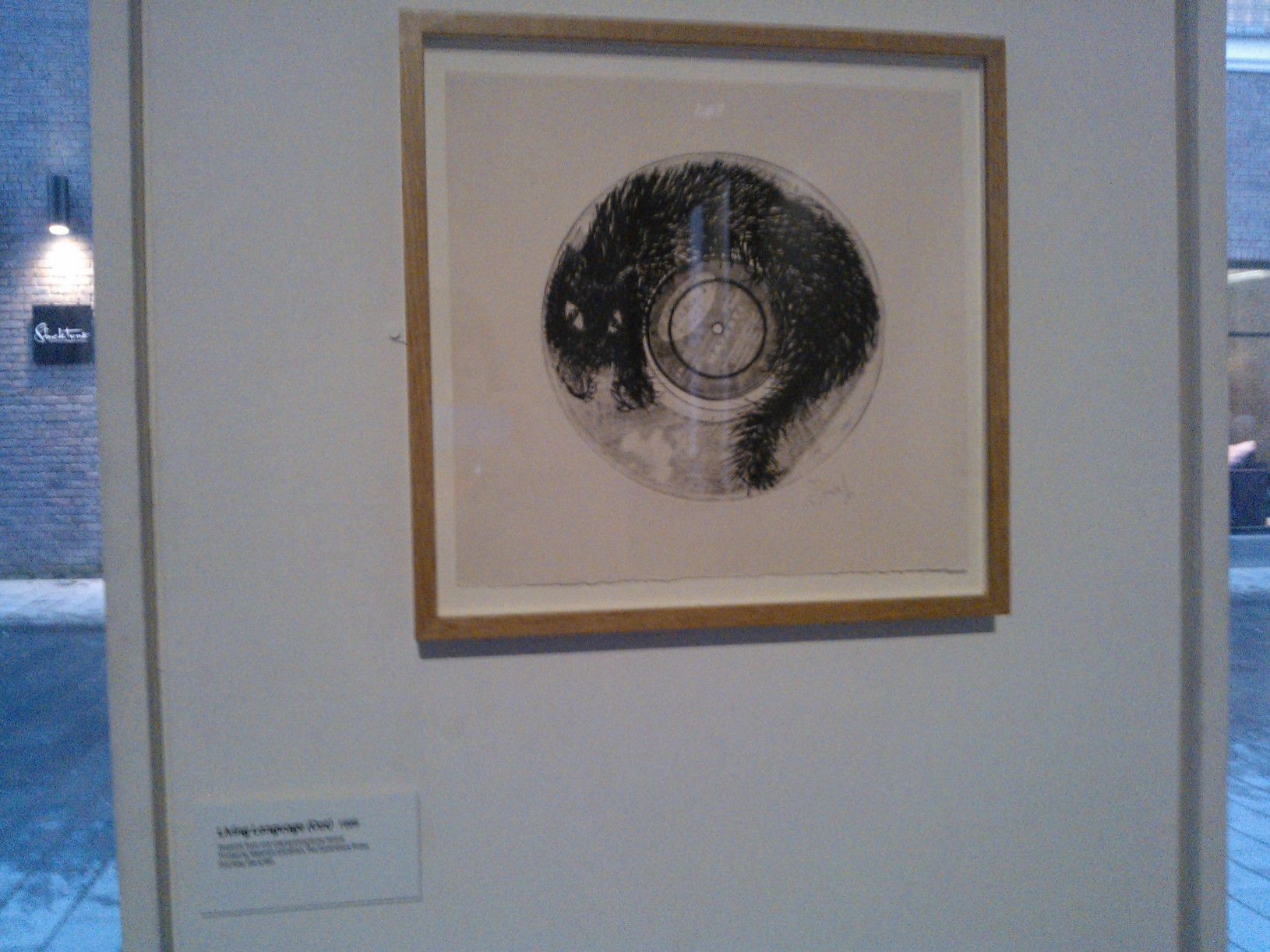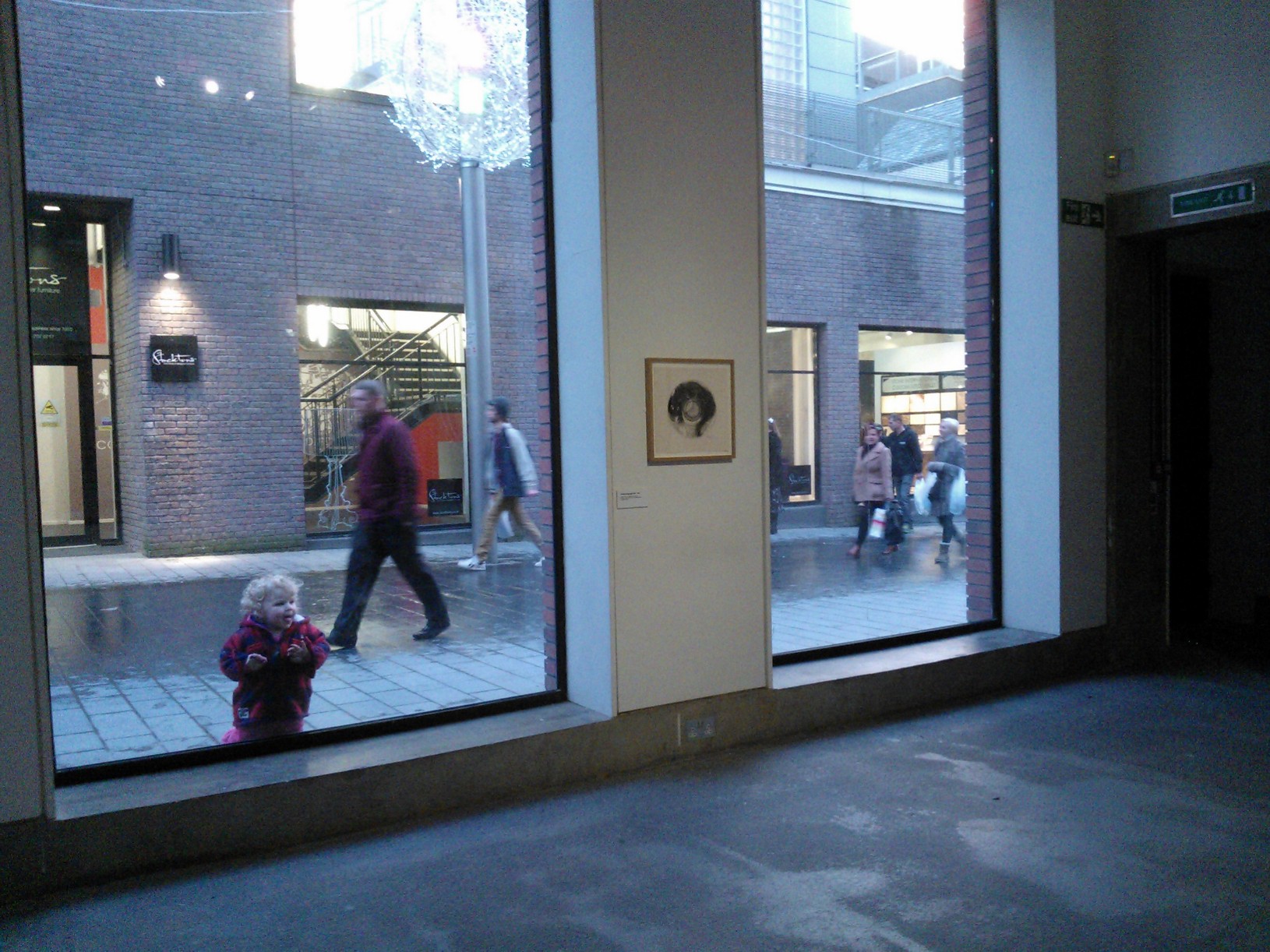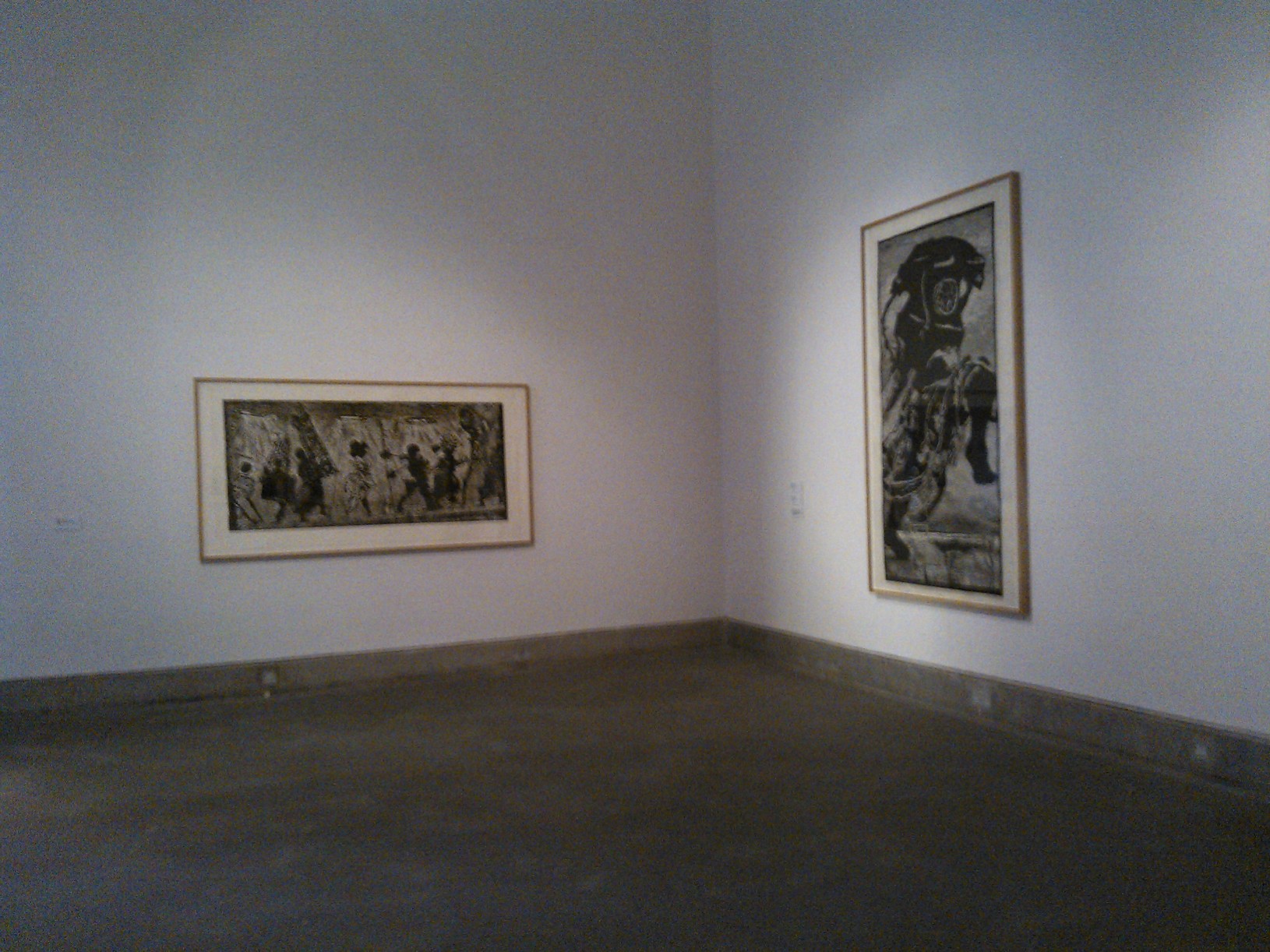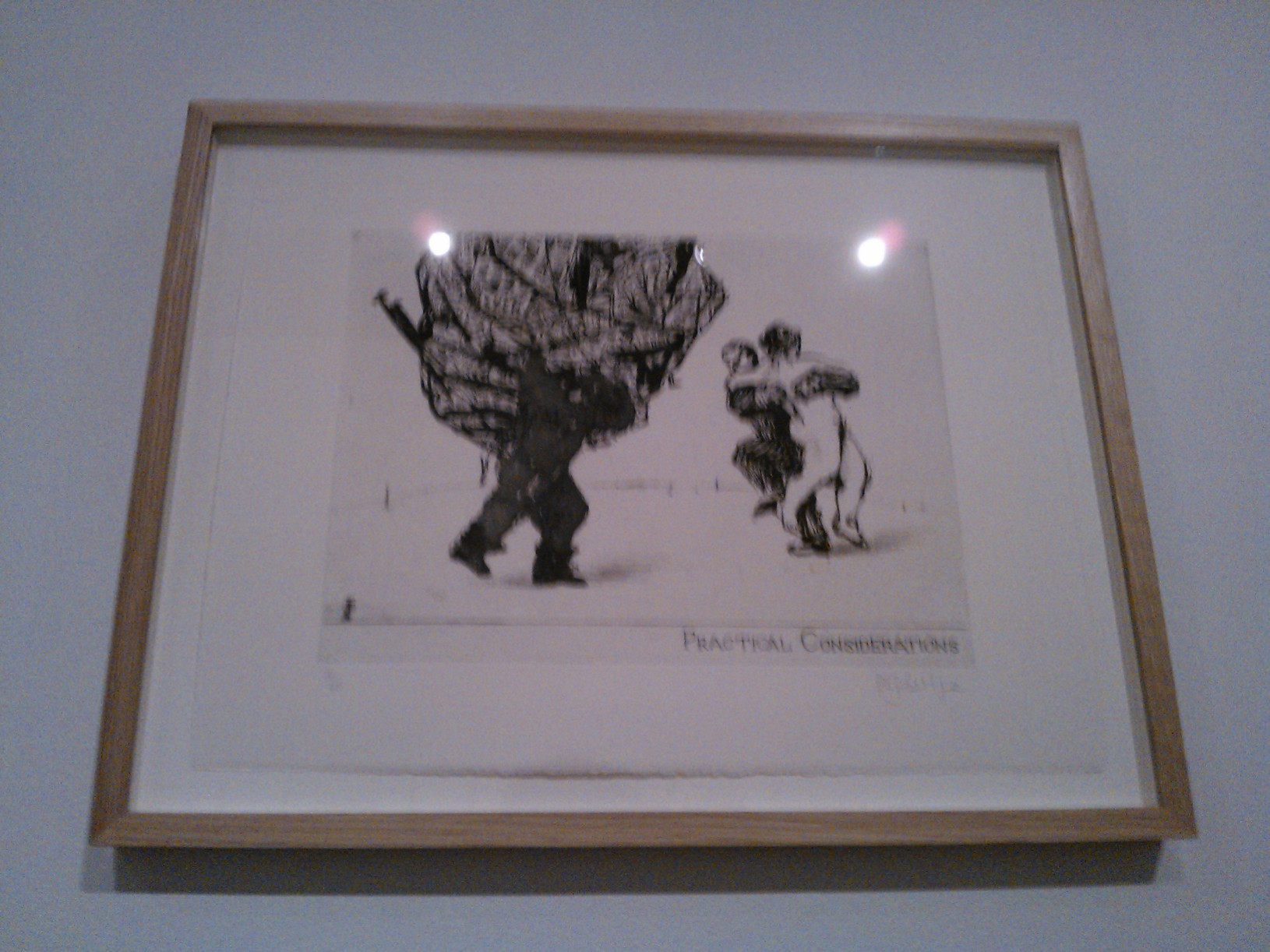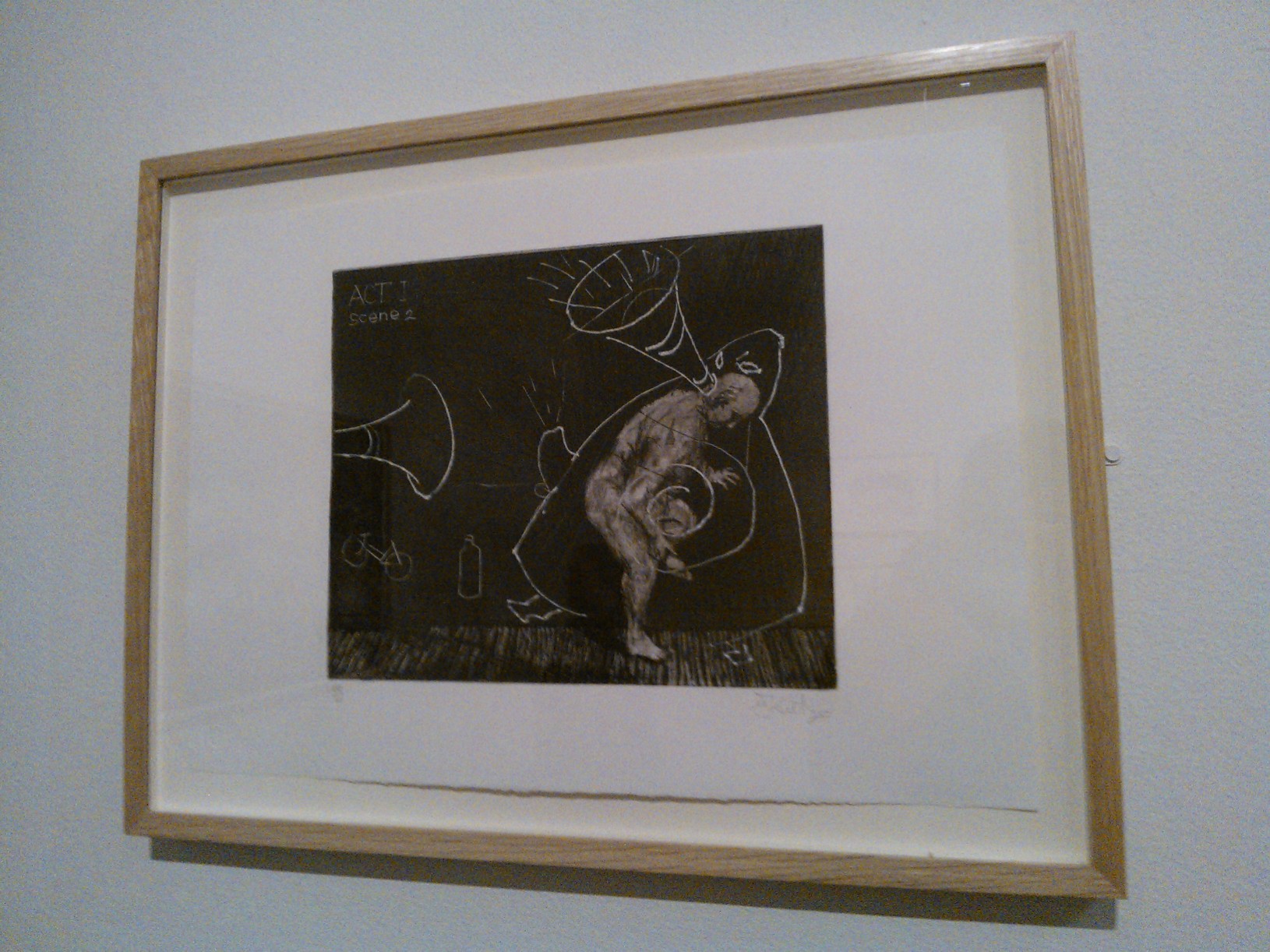The Universal Archive - William Kentridge as Printmaker
The Universal Archive: William Kentridge as Printmaker is the first UK exhibition focusing exclusively on the print output of the much exhibited artist. Printmaking has always been part of Kentridges practice, he has produced more than 400 in the last 25 years. The Universal Archive: William Kentridge as Printmaker exhibits approximately 100 of these, focusing particularly on serial works and more experimental works.
The Bluecoat is the first venue on the exhibition’s tour, which was organised by Hayward Touring and opens with Little Morals (1991), a suite of eight etchings with sugarlift. The imagery is apocalyptic and traces South Africa’s transition from apartheid to democracy. William Kentridge did not start his career as a sculptor, film-maker, sculptor, theatre director or, as we see in this exhibition as a draughtsmen and printmaker. Following in his fathers footsteps (Sydney Kentridge was a leading South African anti-apartheid lawyer) he first studied politics and African Studies before shifting his focus to art and theatre. Kentridge has been quoted as saying he made these prints “with Goya in mind”. Figures and objects in newsprint, some figures so black they appear as voids. Men with trumpet heads, both acting as noise-makers and receptacles, cavort about with fleshy naked Hogarthian women.
Positioned in relation to Little Morals, lies the brushed and bruised looking larger print Sleeping Woman and a series of eight etchings (with soft ground, aquatint and drypoint) entitled Ubu Tells the Truth (1996–7). This series depicts the imagined world of French writer, Alfred Jarry’s fictional and monsterous character Ubu Roi, a Polish dictator who murders and steals his way to fortune. Chalk lines are drawn around the character in the prints, suggesting his psychological state at various moments. The prints stimulated a theatre production in 1997, Ubu and The Truth Commission and the chalk lines were projected onto the physical characters on stage.
The long central gallery space at the Bluecoat is often used as a darkened space, for film, video and installations (most recently the premier of John Akmofrah’s film about Stuart Hall, The Unfinished Conversation). For this exhibition, it has been opened up allowing the visitor to walk down its full length, full of light from the garden outside. In a central shallow alcove is the largest print in the exhibition (2.81 x 3.54m), Learning the Flute (Reverse) from 2004. The apparatus of a stage set is depicted with an eagle sitting at its centre. A projector throws its light through the bird and a beam is channelled from the birds head. Made in conjunction with Kentridge’s 2005 staging of Mozart’s The Magic Flute, this image is a window into Kentridge’s working processes - technology mediated through myth and poetry resulting in constructed, theatrical, devised storytelling.
This gallery also plays host to what Hayward cite as the centre piece of The Universal Archive - an accordion-style fold out book, Portage (2000) - laid out in a vitrine. Four meters long, dark ripped paper silhouette figures are mounted onto unbound pages of French encyclopedia La Nouveau Larousse Illustré. Seemingly walking across the book as if an evacuation is occurring – the figures lug their belongings on back and shoulder. ‘Procession’, as the Hayward website points out, is one of Kentridge’s main thematics – the depiction of procession with all its ambiguous connotations – military marching, carnival, exodus, funereal, celebratory and ceremonial. A good work to look at in relation to these ideas is Kentridge’s Shadow Procession animation from 1999. A video of this, in its entirety, can be found on youtube and the link is provided at the bottom of this article.
Positioned on the far side of this gallery is another series that relates to another theatrical production. Nose (2007-2010) - made up of 30 small-scale prints. All reference a 1930’s opera from Shoshtokovich (it in turn inspired by Gogol’s 1930 short story of the same name) in which the central characters nose detaches from his body and proceeds to ascend the social ladder independently of his host. Looking a little like a potato, dark and straight from the earth - the Nose is shown hanging out in bars enjoying drinks with women, riding in the countryside atop a prickly cactus horse (there is an intimate moment of the Nose and horse kissing). In another he is shot, point-blank range with the proceeding print showing the Nose exploded, murdered. There is something very powerful in these prints, a Kafka-eque melancholy in the Nose’s plight - a very serious kind of absurdity. Kentridge re-staged his own version of The Nose at the New York Metropolitan Opera House in 2010 and these prints were created alongside the production. Acting as performance layouts, performance stills and performance records, they straddle the past, present and future of the theatrical event.
Several works in the exhibition are so recent they have never been seen before in the UK. The most interesting of these, Universal Archive Cat Assemblage (2012) is a cat re-arranged four times. The scratchy skeletal thing arches its back, dis-assembles, dis-joints as if he in the middle of a particularly cruel Magician’s sawing the girl in half act. The cat appears again in one of a series of prints made onto vinyl records in the Living Language series (1999). The gallery information tells us that Kentridge began by experimenting with printing onto gramophone records. He purchased “a pile of old 78rpm records but found that the Shellac-based discs were too fragile for printing as they shattered under the pressure of the press” so he began using vinyl records. The result is a very delicate etched surface that provides a frame or plane in which the narrative can exist within. The record shapes transform the action or environment for the character into a twisting whirly-tron spiral or, in some cases, an endlessly cycling miniaturised globe that, here we see again, the characters trudge along and around – the endless procession.
The Living Language series are juxtaposed with some of the more political of Kentridge’s prints in this exhibition, for example the silkscreen on paper series Art in a State of Siege (1988) which deploys recognisable the recognisable imagery of the political poster and slogan. The arrangement of these works particularly well with some of the Bluecoat’s architectural features. The final gallery downstairs at the Bluecoat, which has an atrium inside/outside feel, presents Art in a State of Siege facing floor to floor to ceiling windows, out to the commercial hub of the city, LiverpoolONE. The endless processions of Kentridge, the cycles of daily life and political turbulence of space and land are reflected back from that which is outside. The rhythms of the city and its theatre - the rhythms of the people, characters with their chalk line patterns and constructions – these are the rhythms of Kentridge.
The Universal Archive: William Kentridge as Printmaker will travel on to Mac in Birmingham (6 March – 2 June 2013) and then to QUAD in Derby (15 June – 18 August 2013).
